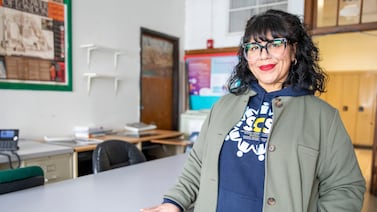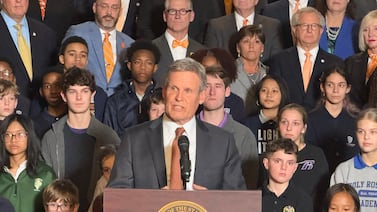A bill that would require elementary principals and other school administrators to get training on early reading instruction passed a key legislative hurdle Thursday evening.
The training, which would be available free online, would be a shorter version of one now required for Colorado’s 23,000 kindergarten through third grade teachers under a 2019 reading law. Principals and school administrators would have until the start of the 2024-25 school year to complete the training.
The seven-member Senate Education Committee unanimously approved the bill Thursday.
The bill, sponsored by state Sens. Jeff Bridges, a Greenwood Village Democrat, and Bob Rankin, a Carbondale Republican, would also require reading specialists serving students in fourth through 12th grade to take the training designed for teachers. Lawmakers said they’ll need to clarify who is covered under the specialist job title. The intention is to provide more training for educators who work with older students who still struggle to read well.
The bill is the latest push in a yearslong effort by state lawmakers, education officials, and parents of students with dyslexia to boost Colorado’s reading achievement through improved teacher training and the use of higher-quality reading curriculum.
Several teachers spoke in support of the bill, noting how much they learned from the state’s 45-hour training on reading instruction.
Molly Veliz, an instructional coach and early literacy teacher in the Denver district, told the committee, “School leaders make decisions about budgets, hiring, curriculum, spending, on and on. If they don’t fully understand, or even believe in the science of reading, that thinking impacts their decisions.”
The science of reading refers to a large body of research about how children learn to read.
Megan Bobroske, a second grade teacher at Bradley International School in Denver, said the reading training she took through the state, along with a strong curriculum, allowed her to help students make nearly a year’s growth in reading in just five months this year.
“I have never seen growth like this before, even before COVID,” she said. “Principals and administrators need to be aware and knowledgeable in best practices in literacy instruction, in order to support, mentor, lead, and coach their teachers well.”
There are just over 1,000 elementary principals in Colorado, and hundreds of additional school administrators who would be required to take science of reading training under the bill. Some have already taken the K-3 teacher training along with their staff.
Colorado’s K-3 teachers have until Aug. 1 to complete the training. Districts where teachers don’t meet that deadline could lose state funding earmarked for struggling readers.
The original version of the bill required the reading training for librarians in public libraries, but amendments approved Thursday eliminated that requirement after librarians objected. Instead, librarians would have access to free training, with no deadline or mandate.






